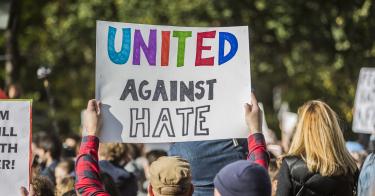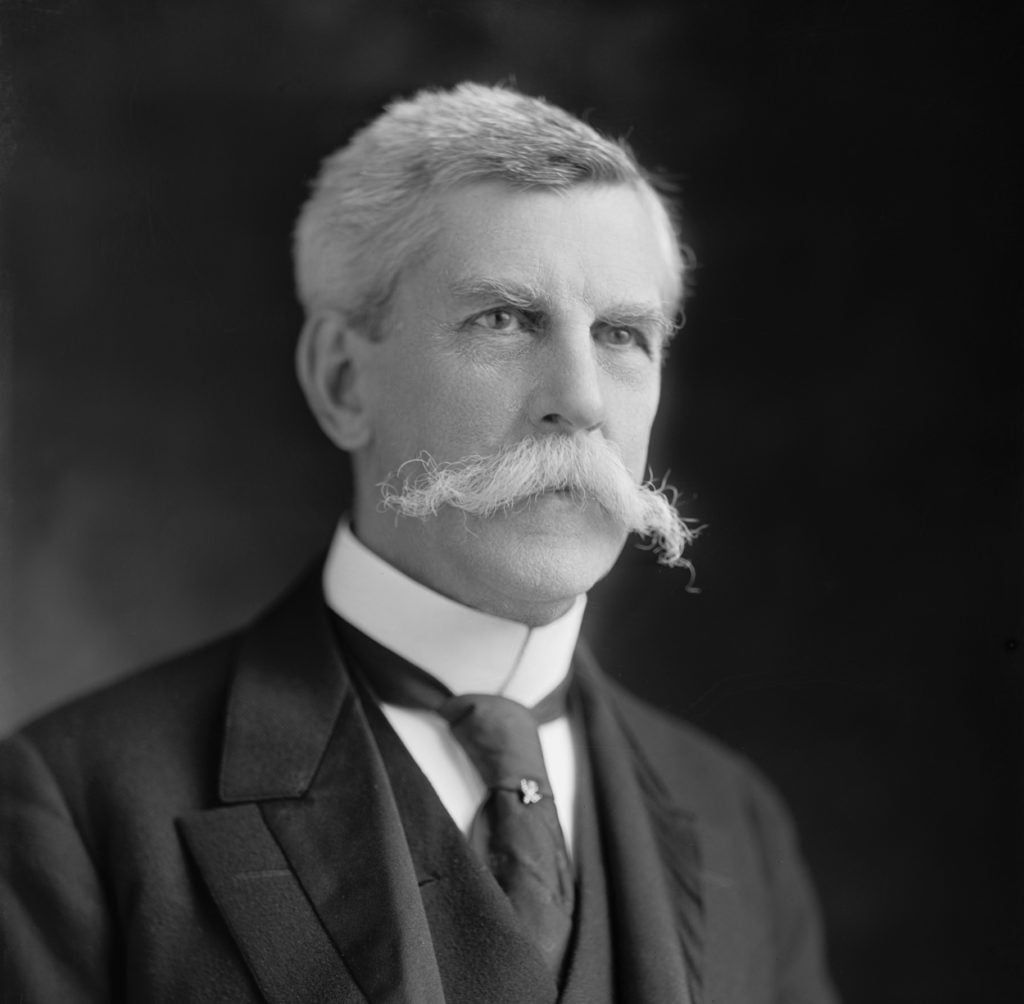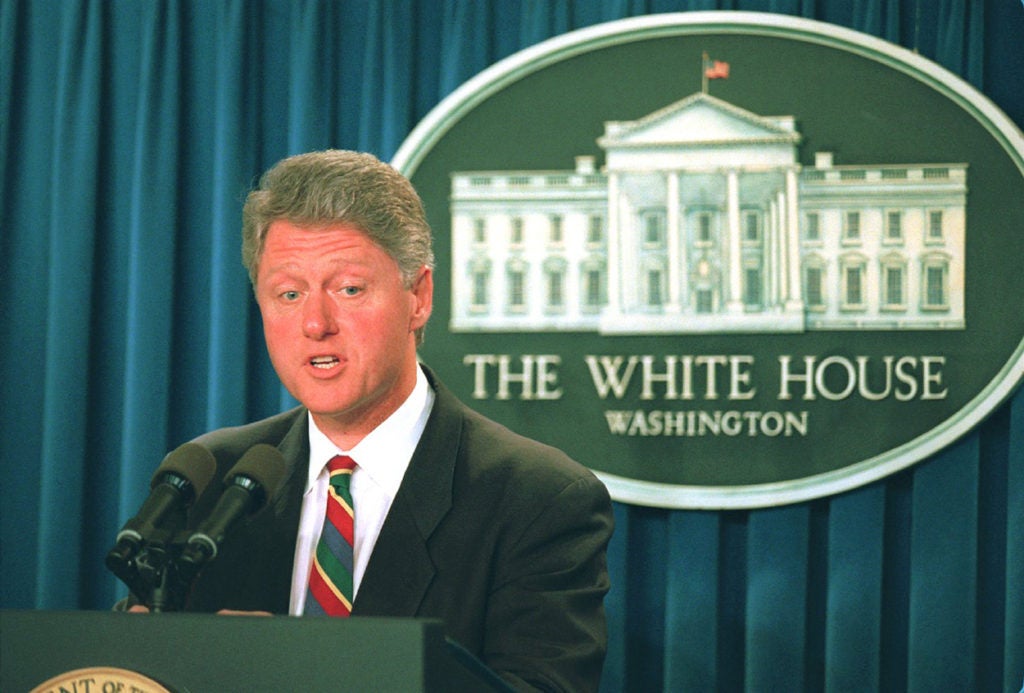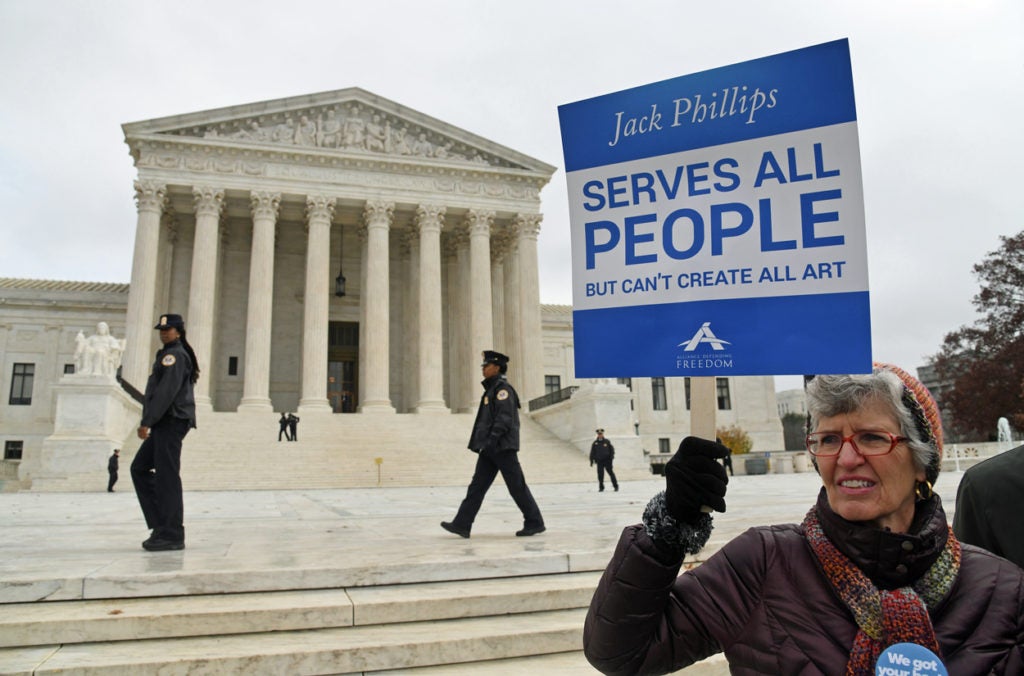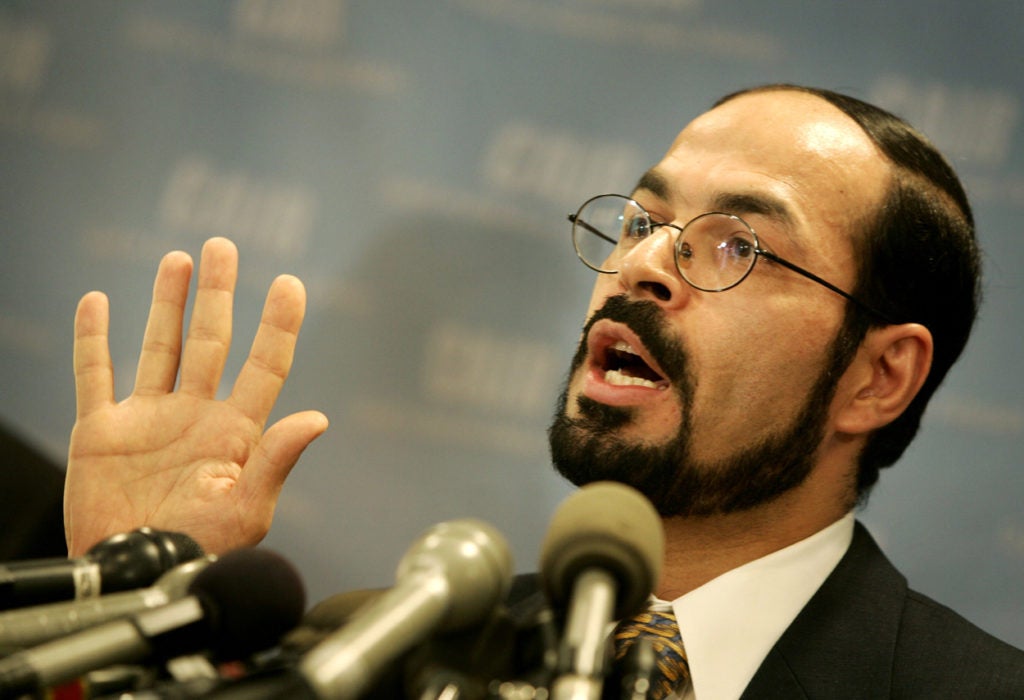Intolerance and illiberalism, nakedly defined as abstractions or principles, are seldom if ever outwardly embraced by progressives.
None but the most extreme will argue that intolerance and censorship are good things in themselves. Normally the preferred course is more subtle.
Instead of openly arresting people who say the wrong things, the new purveyors of intolerance try to sublimate their prohibitions on speech, expression, and thought into more popularly accepted channels. Something must be done to make these prohibitions more palatable, because there is still a great deal of respect in America for freedom of thought, speech, and expression.
How to do that? The answer is quite simple: Change the subject. Shift the gaze away from the sanctity of speech to something more wholesome—to the feelings of minorities, for example, or to the supposed desire to live in more diverse communities.
One of the most popular strategies is to carve out a special category of speech that, in theory at least, leaves the rest of free speech alone. If this can be done, speech can be regulated and criminalized without involving a direct assault on the First Amendment.
A prime example of parsing good speech from bad is the notorious notion of “hate speech,” which involves designating certain kinds of remarks, gestures, expressions, and writings as intentionally hateful and thus worthy of regulation and even criminalization.
Attempts to prohibit hate speech and hate crimes have been around for years in the United States. Appropriate efforts to condemn symbolic acts of violence such as cross burnings by the Ku Klux Klan have expanded over the years to include all sorts of alleged speech and thought crimes.
Today a public statement against illegal immigration or same-sex marriage can be labeled hate speech. The Southern Poverty Law Center routinely includes pro-family groups in its list of “hate” groups based solely on their opposition to same-sex marriage.
By and large America’s upper courts have not looked favorably on campaigns to criminalize speech. When such cases have come before the Supreme Court, it has ruled in favor of free speech.
Nevertheless, proponents of hate speech restrictions are not giving up. The movement has grown in recent years, particularly as the values and ideologies of identity politics became acceptable to more Americans.
Legal Restrictions on Speech
There are two types of threatening or defamatory speech that can potentially be restricted by the law. One is any speech, gesture, or conduct that is intended to incite, and is likely to incite, imminent lawless action such as violence.
The second includes certain classes of speech, such as obscenity and libelous words, which can be limited. They were not considered to rise to the level of First Amendment protected speech.
Oliver Wendell Holmes added a twist to the theme of prohibited speech in 1919 when he argued in Schenck v. United States that “falsely shouting fire in a crowded theater” was prohibited. The circumstances for restricting speech were expanded somewhat, but the main purpose of preventing physical harm was retained.
Justice Oliver Wendell Holmes, Jr., established the “clear and present danger” standard for when restrictions on First Amendment freedom could be permitted. (Photo: JT Vintage/Zuma Press/Newscom)
Every attempt to curb free speech in America has run up against the First Amendment, which provides clearly that “Congress shall make no law … abridging the freedom of speech, or of the press … .”
Yet the First Amendment is not the only obstacle. There is also the tendency in American jurisprudence to observe what is called the “strict scrutiny” test of the law. The least restrictive means available should be used to pursue a certain end. In addition, laws should be narrowly tailored to deal with conduct that pertains to a relevant end.
When it comes to connecting intentions and actions, the law should focus on what can clearly be discerned. It must also be very careful not to allow extraneous factors to cloud judgment about whether a crime was committed.
The Rise of ‘Hate Speech’ Rules
Criminal intent has always mattered in determining if a crime was premeditated. All this started to change with the rise of radical multiculturalism. Under its influence the ideas of hate speech and hate crimes were invented. Instead of worrying about the violent intent of individuals, hate speech advocates wanted to ban utterances, gestures, conduct, or writing that they deemed prejudicial against a protected individual or group.
They were most successful on college campuses, spawning a rash of new speech codes and other imaginative methods to control what people say and think. In the name of diversity certain classes of people—racial minorities, women, and homosexuals—were considered to need protection from offensive language.
The shift was not to some heightened awareness of persecution so much as a new focus on generalizing the causes of the persecution. Hate speech no longer focused on the acts of individuals but on whole classes of people who were supposedly to blame, regardless of what individuals in each class might say or believe.
Despite their success on campus, advocates for hate speech restrictions have been rebuffed repeatedly by the courts. One well-known case is the high court’s 1977 decision ruling that the City of Skokie, Illinois, violated the First Amendment when it passed a series of ordinances designed to prevent demonstrations by American Nazis without affording strict procedural safeguards.
Another case involved a St. Paul, Minnesota, teenager’s burning of a makeshift cross on an African-American neighbor’s lawn in 1990. He was convicted of violating St. Paul’s Bias-Motivated Crime Ordinance, but his conviction was overturned in a 1992 unanimous decision by the Supreme Court on free speech grounds.
As the courts closed the doors on hate speech laws, advocates sought other windows of opportunity.
The most successful has been to try to control speech through administrative regulation, such as enlisting the Federal Communications Commission to regulate the content of speech on radio, TV, and other broadcast media.
The first attempt was the so-called Fairness Doctrine of 1949, whereby political content on the airways would supposedly be balanced by regulation. The Fairness Doctrine has been overturned, but in 1992 Congress directed the National Telecommunications and Information Administration to examine the role of telecommunications in disseminating hate speech as an incitement to hatred and violence. In 1993 the National Telecommunications and Information Administration issued a report titled “The Role of Telecommunications in Hate Crime,” in which it argued that a “climate” of hate can be seen as an inducement to violence.
These attempts to regulate free speech directly have been no more successful than attempts to curtail speech through the courts. But that does not mean the hate speech movement has been a failure. Its most significant impact has been on public and political opinion—on expanding the acceptable boundaries for defining what free speech actually is.
By the time of the Oklahoma City bombing in 1995, the ground had already been prepared to bring hate speech norms and concepts into popular political discourse. It was then that President Bill Clinton tried to place blame for the Oklahoma attack on the “loud and angry voices of hate,” by which he was widely interpreted to mean conservatives and Republicans.
Under this new standard, people who had nothing to do with a crime could be held accountable for it, at least indirectly and politically. It was a subtle but important step toward blurring the lines between actions and speech, and between individual culpability and the social “climate” in which crimes are thought to take place.
President Bill Clinton blurred the lines between speech and action when he attributed the Oklahoma City bombing to the “loud and angry voices of hate.” (Photo: Eric Hylden/KRT/Newscom)
Since the 1990s, under the influence of the radical multicultural movement, the definitions of hate speech have become far more elastic. In 2009, the National Hispanic Media Coalition outlined its definition in a report. It specified four areas as hate speech: false facts, flawed argumentation, divisive language, and dehumanizing metaphors.
Hate speech was no longer about the explicit words of individuals meant to incite violence, but a general atmosphere of public opinion that could be construed to encourage violence against certain kinds of people.
Seeing Speech as Harm
There are very serious problems with the concept of hate speech. For one thing, it fails to distinguish between legitimate political content, which is protected by the Constitution, and explicit intentions to commit violence, which are not.
Under the new rules, what may clearly be an expression of political opinion could be interpreted as offensive to anyone anywhere, and therefore arbitrarily deemed hateful. No direct threats of harm are even necessary. Certain ideas and opinions are now defined by their political content to be the moral equivalent of a threat to do violence and physical harm.
The motive of hatred is inferred not from actual words threatening violence but from, for example, what the National Hispanic Media Coalition deems “false facts, flawed argumentation, and divisive language.” No distinction is made between threatening someone with real violence and merely disagreeing with the facts and arguments. Nor is allowance made for the possibility that a disagreement over facts and logic may have nothing whatsoever to do with feelings of hatred.
Hating someone and criticizing their arguments or positions are not the same thing. A Christian, for example, may object to gay marriage on religious grounds, but that does not mean he hates any individual gay person any more than a gay person’s objection to the traditional definition of marriage means he hates straight people.
A supporter of Jack Phillips stands outside the Supreme Court. Phillips, a cake baker, was sued for declining to create a custom cake for a same-sex wedding, due to sincerely held religious beliefs. (Photo: Douliery Olivier/ABACA/Newscom)
To assume that all disagreements are grounded in irrational fears is itself irrational. If it were otherwise, we might as well abolish not only our universities but our system of law: Both rely on the assumption that people are moral beings with the freedom to make choices. Without that assumption, people honestly could not be held accountable for anything.
If it were all about presumed ill motives, especially those mandated by vague social forces, we might as well not bother to learn the facts about anything. Our pursuit of knowledge and justice fundamentally depends on open and honest debate, and to sacrifice that standard is not only to return to pre-liberal standards of controlling knowledge but to slide over into authoritarian methods of thought control.
Losing Objectivity
Another serious flaw is that hate speech laws completely ignore a fundamental principle of American jurisprudence—namely, that a person convicted of a crime must have actual criminal intent.
It is ludicrous to argue that saying offensive words alone or simply disagreeing with someone in an argument shows criminal intent. Even in cases where maliciousness was clearly involved, such as the St. Paul case, the Supreme Court has ruled that freedom of speech trumps offensive speech when no physical harm is intended.
It also has ruled that criminal intent is required even in cases where violent language is aimed at a specific person. It is not enough, the high court ruled in the 2015 Facebook case of Anthony Elonis, to show that a “reasonable” person could detect a threat from someone’s postings. The mental state of the person making a threat must be considered to determine whether the real intent to commit violence existed.
Proponents of hate speech restrictions such as New York University Professor Jeremy Waldron believe that criminal intent to commit violence is irrelevant. All that is required for speech to be categorized as hate speech is that a person’s or group’s “dignity” is under threat.
Put aside the huge difference between offending someone and meaning them physical harm. The bigger problem is that it is left almost entirely to the accuser to determine and apply the standards for defining dignity and therefore establish what is offensive and what is not.
The rational give-and-take that one assumes should be part of such determinations—and which necessarily presumes some social consensus on how the speech affects the public good—is short-circuited by giving one side a decided advantage.
The problem is compounded by the fact that there can be legitimate disagreements over the political content of speech. Nor can the determination of hate speech be justified solely on the basis of whether doing so engenders “social peace,” as Waldron argues.
If this were an unassailable public good in and of itself, we could find any number of authoritarian ways to try to enforce it. But we would be considerably less free and democratic as a result.
Authoritarian rulers ban free speech to maintain public order, but even if this extreme case is not what Waldron and other defenders of hate speech have in mind, we must ask where to draw the line.
Should the people at the Council on American-Islamic Relations get to decide that any criticism of Sharia law is ipso facto “Islamophobia” and therefore make it legally prohibited?
Where is the threat to public order here? Surely it is not from people who object to the religious coercion demanded by Sharia law, but rather from those who use coercion (1) to maintain religious discipline among the faithful and (2) to muzzle those outside the faith who may have religious views of their own.
If peace is about justice, there is precious little justice in that.
Nihad Awad, executive director of the Council on American-Islamic Relations (CAIR). CAIR has labeled critics of Sharia law “Islamophobic.” (Photo: Jason Reed/Reuters/Newscom)
Not since George Orwell’s “thoughtcrimes”—the author’s word for unapproved thoughts in his novel “1984”—has there been so little regard for the dangers of controlling free speech.
Not only has the bar been lowered from threatening physical violence to merely giving offense, it is now up to those who allege an offense to decide whether the offense was intended.
The presumption of guilt is built ideologically into the structure of the political narrative underlying the accusations: Only racial minorities can know what it is like to be discriminated against, so only they can know what hate speech is. Only Muslims get to decide what “Islamophobia” is and what it is not.
What is really in the heart of the accused is immaterial, because both meaning and intent are prejudged by a set of proscribed ideological positions and, in some cases, even by the race of the accused.
The Death of Freedom
Whatever this may be, it is not liberal. Liberalism of all kinds, including the more progressive variety adopted by the ACLU in the 20th century, always made freedom of expression and speech a constitutionally protected principle.
Not anymore. Today free speech is in progressive liberal circles clearly subordinated to other concerns. Lost are not only a sense of balance and proportion but the principle of mediation.
Liberalism has survived all these years because it was flexible. It accepted implicitly the idea that people had different interests as individuals, and that the only way to reconcile those differences was to assume the good faith of everyone equally as individuals.
Hate speech theory does not do that. It assumes bad faith on the part of people regardless of their stated intentions, essentially calling them liars if they defend themselves against the current orthodoxy.
Above all, hate speech theory obliterates the ethical responsibility of the individual. Liberal philosopher and lawyer Ronald Dworkin was quite right that, as obnoxious as some hateful speech can be, it is necessary to allow it for no other reason than that trying to ban it will undermine the moral case against discrimination.
Ultimately people—individual people—have to make their own moral judgments about how to treat each other with respect and dignity. Having this issue forced on them by law and coercion not only takes away the right of individuals to make that call on their own, it also undermines the moral authority of making the right decision.
As John Locke argued in his Letter Concerning Toleration (1689), coercion in matters of conscience can undercut the moral legitimacy of the oppressor’s cause. One must be free to decide; otherwise the decision is not ethical at all but simply a matter of submission as a way to avoid punishment.
Am I exaggerating the threat to free speech? Most Americans still cherish free speech. They will not give it up lightly. But the trends are not good.
Look at what is happening in other countries. Most European countries and Canada have had very strict hate speech laws for quite some time. Most of them are far more intrusive in criminalizing the content of speech and expression than we are used to in the United States.
For example, in Sweden a pastor arrested in 2003 was sentenced to one month in prison for delivering a sermon in church critical of homosexuality. The conviction was eventually overturned on free speech grounds, but what opened the door for the prosecution in the first place was a 2002 law that explicitly listed criticism of sexual orientation in church sermons as a criminal act.
The abuse happened because the law was written with little or no regard for religious liberty, which may not be surprising in a highly secular country like Sweden, but which should be a scandal in the United States.
One of the unique attributes of being American has been a passionate devotion to free speech. It is one characteristic that sets us apart from other Western countries, where the tradition is far less cherished.
As lines get blurred and free speech is cheapened as a mere social fiction by clever intellectuals, we could find ourselves losing one of the most precious birthrights of our historical fight for freedom—the liberty to believe and say what we please about the nature of our government, our politics, and our society.
This excerpt was taken with permission from Kim Holmes’ book, “The Closing of the Liberal Mind: How Groupthink and Intolerance Define the Left.“
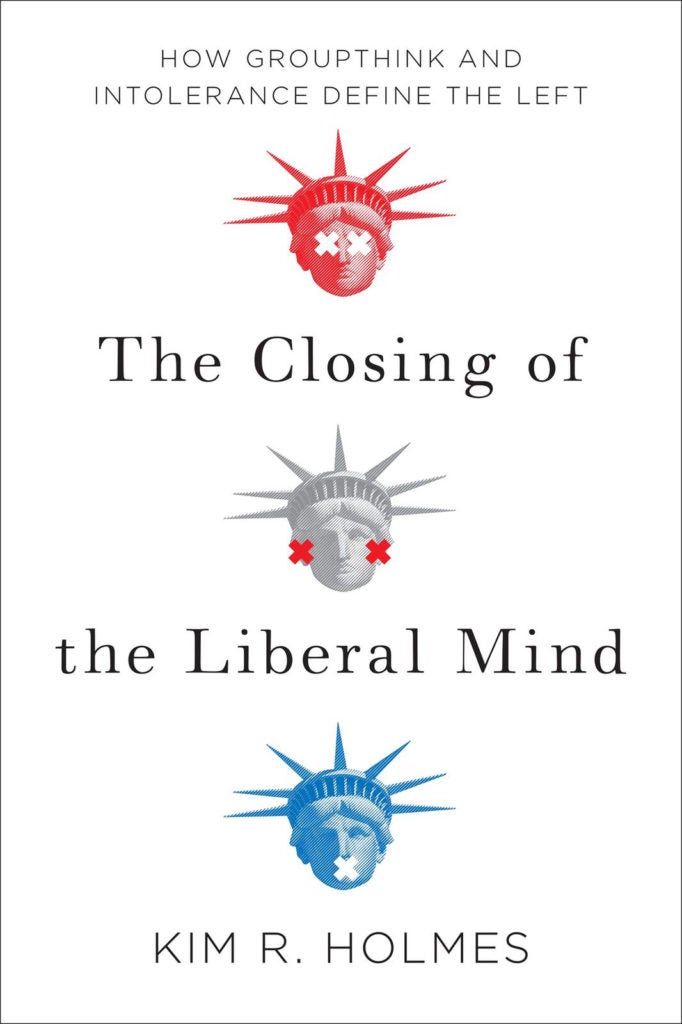
This piece originally appeared in The Daily Signal.
